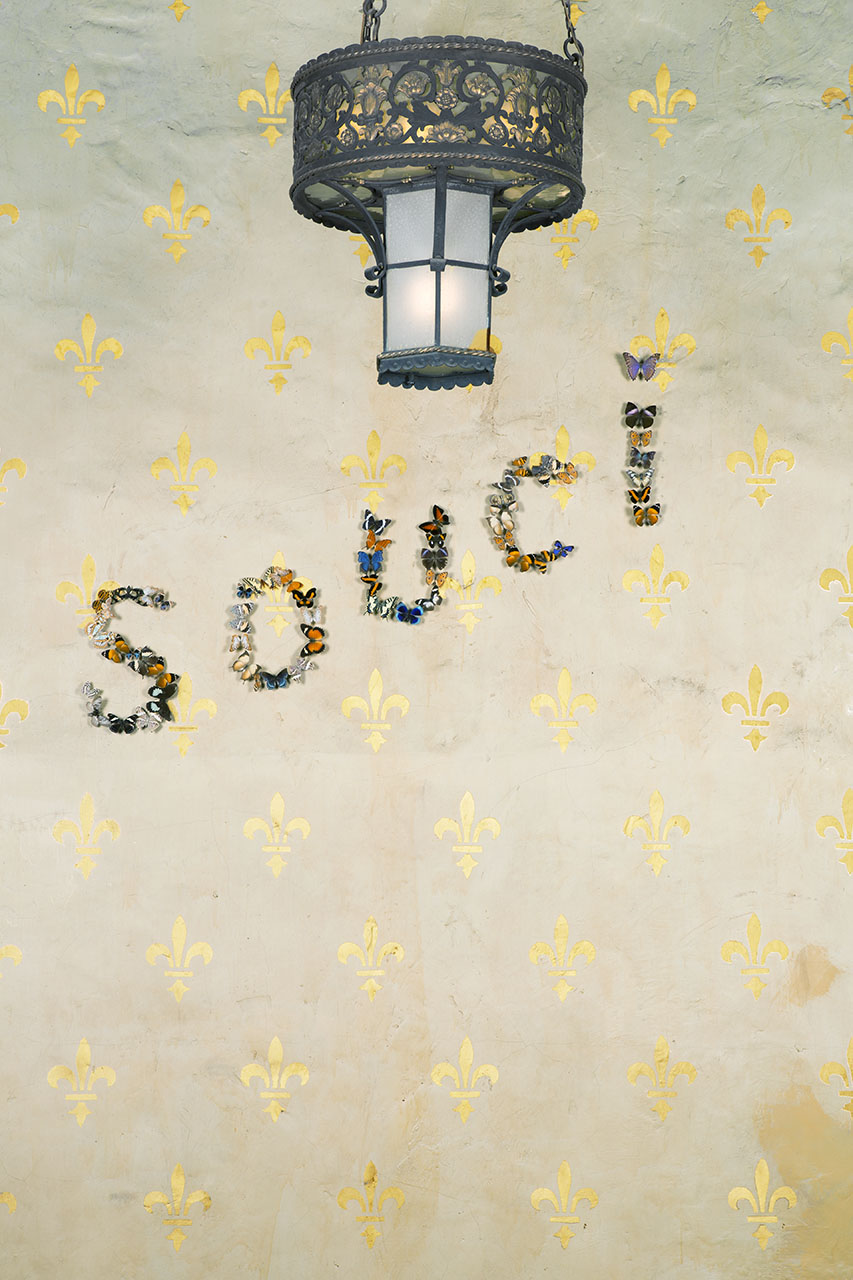Art & Exhibitions
Sophie Calle Goes to Church
The artist's installation in a chapel on the Upper East Side.

The artist's installation in a chapel on the Upper East Side.

Alexandra Peers

Sophie Calle‘s art has long circled issues of intimacy, memory, and the artist’s own emotional baggage. In the French Conceptualist’s latest work, on view at the Episcopal Church of the Heavenly Rest on Manhattan’s Upper East Side, she hoists perhaps the biggest burden of all: her relationship with her own dying mother. In the process, “Rachel, Monique” makes the passionate case for the more frequent display of contemporary art in unexpected, unlikely, and spiritual spaces.
“Rachel, Monique” has several components: a 2006 film taken of the elder woman’s deathbed, an arrangement of butterflies spelling out “Souci” (meaning “worry”), and photographs of headstones reading “Mother.” At first glance, the components of the installation, jointly presented by Paula Cooper Gallery and Galerie Perrotin, seems decorous, reverential. It seems an artwork about the grieving of a distressed daughter, the theme made large by the combination of the artist’s own frequent returns to the topic over the last decade, by the powerhouse galleries behind it, and by its placement in a Fifth Avenue chapel.

Exhibition view of Sophie Calle, “Rachel, Monique,” at the Episcopal Church of the Heavenly Rest, New York (5/9–6/25/2014) © 2014 Sophie Calle / Artists Rights Society (ARS), New York / ADAGP, Paris. Courtesy of the artist, Paula Cooper Gallery, and Galerie Perrotin.
Photo: Guillaume Ziccarelli.
At second glance, the piece is more disquieting and less reverential. Monique emerges as no saint. In recorded readings from her diary, she comes across as a petulant sort. The deathbed film, as projected on the wall of a side chapel, appears static and distancing. The surrounding works seem disjointed. What did Monique (who also went by the name of “Rachel,” hence the title) do to earn the monumental grief presented here? It’s a tantalizing question, but never clear.
The masterstroke of the work is in its placement. The beauty and the weight of the church setting (whose clergy should be commended for their aesthetic courage) are loaned to the artwork, giving it the credence of a funeral. Visitors, falling into pattern, act accordingly. They sit for some time in pews, a few apparently pray; they discuss the woman, thoughtfully, even if none knew her. The location transforms behavior, prompting something of an audience performance in Monique’s honor.
“Rachel, Monique” is on view at the Episcopal Church of the Heavenly Rest, 2 East 90th Street, New York City, 10 a.m.–6 p.m., through June 25.